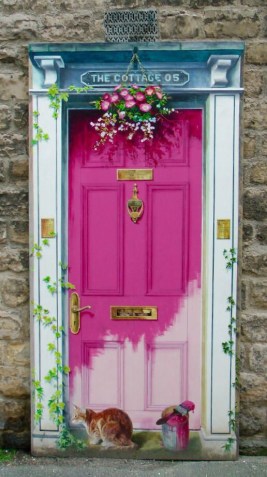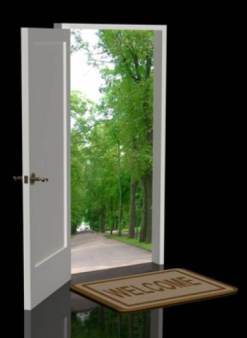The weather prevents me from being there physically, but this is a transcript of my remarks for “Varieties of Digital Humanities,” MLA, Jan 5, 2018.
Using numbers to understand cultural history is often called “cultural analytics”—or sometimes, if we’re talking about literary history in particular, “distant reading.” The practice is older than either name: sociologists, linguists, and adventurous critics like Janice Radway have been using quantitative methods for a long time.
But over the last twenty years, numbers have begun to have a broader impact on literary study, because we’ve learned to use them in a wider range of ways. We no longer just count things that happen to be easily counted (individual words, for instance, or books sold). Instead scholars can start with literary questions that really interest readers, and find ways to model them. Recent projects have cast light, for instance, on the visual impact of poetry, on imagined geography in the novel, on the instability of gender, and on the global diffusion of stream of consciousness. Articles that use numbers are appearing in central disciplinary venues: MLQ, Critical Inquiry, PMLA. Equally important: a new journal called Cultural Analytics has set high standards for transparent and reproducible research.
Of course, scholars still disagree with each other. And that’s part of what makes this field exciting. We aren’t simply piling up facts. New methods are sparking debate about the nature of the knowledge literary historians aim to produce. Are we interpreting the past or explaining it? Can numbers address perspectival questions? The name for these debates is “critical theory.” Twenty years from now, I think it will be clear that questions about quantitative models form an important unit in undergraduate theory courses.
Literary scholars are used to imagining numbers as tools, not as theories. So there’s translation work to be done. But translating between theoretical traditions could be the most important part of this project. Our existing tradition of critical theory teaches students to ask indispensable questions—about power, for instance, and the material basis of ideology. But persuasive answers to those questions will often require a lot of evidence, and the art of extracting meaningful patterns from evidence is taught by a different theoretical tradition, called “statistics.” Students will be best prepared for the twenty-first century if they can connect the two traditions, and do critical theory with numbers.
So in a lot of ways, this is a heady moment. Cultural analytics has historical discoveries, lively theoretical debates, and a public educational purpose. Intellectually, we’re in good shape.
But institutionally, we’re in awful shape. Or to be blunt: we are shape-less. Most literature departments do not teach students how to do this stuff at all. Everything I’ve just discussed may be represented by one unit in one course, where students play with topic models. Reduced to that size, I’m not sure cultural analytics makes any sense. If we were seriously trying to teach students to do critical theory with numbers, we would need to create a sequence of courses that guides them through basic principles (of statistical inference as well as historical interpretation) toward projects where they can pose real questions about the past.
What keeps us from building that curriculum? Part of the obstacle, I think, is the term digital humanities itself. Don’t get me wrong: I’m grateful for the popularity of DH. It has lent energy to many different projects. But the term digital humanities has been popular precisely because it promises that all those projects can still be contained in the humanities. The implicit pitch is something like this: “You won’t need a whole statistics course. Come to our two-hour workshop on topic models instead. You can always find a statistician to collaborate with.”
I understand why digital humanists said that kind of thing eight years ago. We didn’t want to frighten people away. If you write “Learn Another Discipline” on your welcome mat, you may not get many visitors. But a deceptively gentle welcome mat, followed by a trapdoor, is not really more welcoming. So it’s time to be honest about the preparation needed for cultural analytics. Young people entering this field will need to understand the whole process. They won’t even be able to pose meaningful questions, for instance, without some statistics.

But the metaphor of a welcome mat may be too optimistic. This field doesn’t have a door yet. I mean, there is no curriculum. So of course the field tends to attract people who already have an extracurricular background—which, of course, is not equally distributed. It shouldn’t surprise us that access is a problem when this field only exists as a social network. The point of a classroom is to distribute knowledge in a more equal, less homosocial way. But digital humanities classes, as currently defined, don’t really teach students how to use numbers. (For a bracingly honest exploration of the problem, see Andrew Goldstone.) So it’s almost naive to discuss “barriers to entry.” There is no entrance to this field. What we have is more like a door painted on the wall. But we’re in denial about that—because to admit the problem, we would have to admit that “DH” isn’t working as a gateway to everything it claims to contain.
I think the courses that can really open doors to cultural analytics are found, right now, in the social sciences. That’s why I recently moved half of my teaching to a School of Information Sciences. There, you find a curricular path that covers statistics and programming along with social questions about technology. I don’t think it’s an accident that you also find better gender and ethnic diversity among people using numbers in the social sciences. Methods get distributed more equally within a discipline that actually teaches the methods. So I recommend fusing cultural analytics with social science partly because it immediately makes this field more diverse. I’m not offering that as a sufficient answer to problems of access. I welcome other answers too. But I am suggesting that social-scientific methods are a necessary part of access. We cannot lower barriers to entry by continuing to pretend that cultural analytics is just the humanities, plus some user-friendly digital tools. That amounts to a trompe-l’oeil door.
What the social sciences lack are courses in literary history. And that’s important, because distant readers set out to answer concrete historical questions. So the unfortunate reality is, this project cannot be contained in one discipline. The questions we try to answer are taught in the humanities. But the methods we use are taught, right now, in the social sciences and data science. Even if it frightens some students off, we have to acknowledge that cultural analytics is a multi-disciplinary project—a bridge between the humanities and quantitative social science, belonging equally to both.
I’m not recommending this approach for the DH community as a whole. DH has succeeded by fitting into the institutional framework of the humanities. DH courses are often pitched to English or History majors, and for many topics, that works brilliantly. But it’s awkward for quantitative courses. To use numbers wisely, students need preparation that an English major doesn’t provide. So increasingly I see the quantitative parts of DH presented as an interdisciplinary program rather than a concentration in the humanities.
 In saying this, I don’t mean to undersell the value of numbers for humanists. New methods can profoundly transform our view of the human past, and the research is deeply rewarding. So I’m convinced that statistics, and even machine learning, will gradually acquire a place in the humanistic curriculum.
In saying this, I don’t mean to undersell the value of numbers for humanists. New methods can profoundly transform our view of the human past, and the research is deeply rewarding. So I’m convinced that statistics, and even machine learning, will gradually acquire a place in the humanistic curriculum.
I’m just saying that this is a bigger, slower project than the rhetoric of DH may have led us to expect. Mathematics doesn’t really come packaged in digital tools. Math is a way of thinking, and using it means entering into a long-term relationship with statisticians and social scientists. We are not borrowing tools for private use inside our discipline, but starting a theoretical conversation that should turn us outward, toward new forms of engagement with our colleagues and the world.
What is the point of studying culture with numbers, after all? It’s not to change English departments, but to enrich the way all students think about culture. The questions we’re posing can have real implications for the way students understand their roles in history—for instance, by linking their own cultural experience to century-spanning trends. Even more urgently, these questions give students a way to connect interpretive insights and resonant human details with habits of experimental inquiry.
Instead of imagining cultural analytics as a subfield of DH, I would almost call it an emerging way to integrate the different aspects of a liberal education. People who want to tackle that challenge are going to have to work across departments to some extent: it’s not a project that an English department could contain. But it is nevertheless an important opportunity for literary scholars, since it’s a place where our work becomes central to the broader purposes of the university as a whole.
